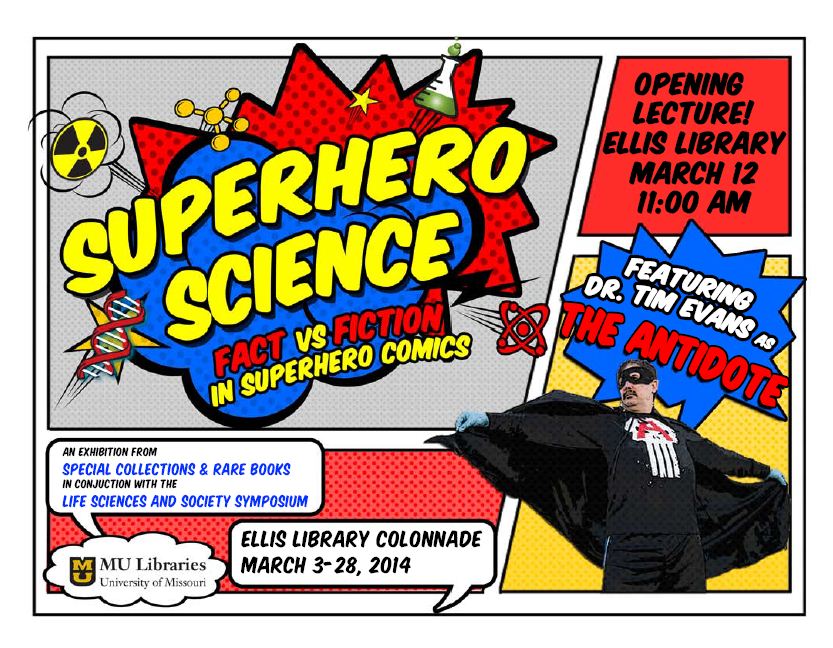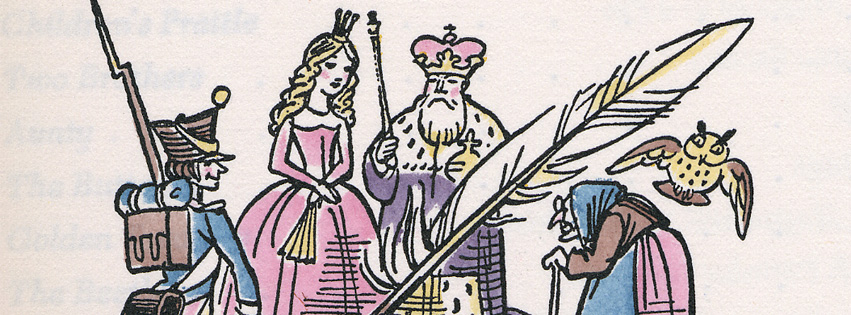Giovanni Boccaccio was born seven hundred years ago in Tuscany, Italy. Special Collections and Rare Books celebrates this important anniversary by displaying editions of Boccaccio’s work as well as that of influential contemporaries and predecessors.
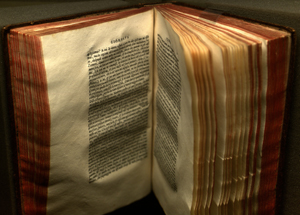 Boccaccio made an inauspicious start as the illegitimate son of Boccaccino di Chellino. He was adopted by his father, but along with security and status came the duties associated with being an acknowledged scion of the merchant class. Boccaccio received training in banking and law–both of which he resented– before abandoning both for poetry.
Boccaccio made an inauspicious start as the illegitimate son of Boccaccino di Chellino. He was adopted by his father, but along with security and status came the duties associated with being an acknowledged scion of the merchant class. Boccaccio received training in banking and law–both of which he resented– before abandoning both for poetry.
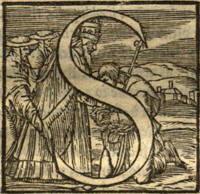 Though Boccaccio is best known today for The Decameron, he wrote over fifteen works, many of which were valued over The Decameron in his own lifetime. Beyond the passing tides of literary taste, what remains certain is that Boccaccio’s work reflects the uncertainty of his era. Fourteenth-century Italy, with its dynastic wars, popular uprisings, and plagues favored resourcefulness. There were times to cast off the past, and there were times to cling to past models. Boccaccio began writing in the vernacular early in his career with Caccia di Diana of 1334. It is to this phase that we owe The Decameron, a work that has been called the “epic of the merchant class” and "Boccaccio’s human comedy that stands next to Dante’s Divine Comedy." His work would take a sober turn after he became acquainted with Petrach. With Petrarch’s encouragement, Boccaccio studied the classics and began writing in Latin. To this phase we owe the existence of De genealogia deorum gentilium.
Though Boccaccio is best known today for The Decameron, he wrote over fifteen works, many of which were valued over The Decameron in his own lifetime. Beyond the passing tides of literary taste, what remains certain is that Boccaccio’s work reflects the uncertainty of his era. Fourteenth-century Italy, with its dynastic wars, popular uprisings, and plagues favored resourcefulness. There were times to cast off the past, and there were times to cling to past models. Boccaccio began writing in the vernacular early in his career with Caccia di Diana of 1334. It is to this phase that we owe The Decameron, a work that has been called the “epic of the merchant class” and "Boccaccio’s human comedy that stands next to Dante’s Divine Comedy." His work would take a sober turn after he became acquainted with Petrach. With Petrarch’s encouragement, Boccaccio studied the classics and began writing in Latin. To this phase we owe the existence of De genealogia deorum gentilium.

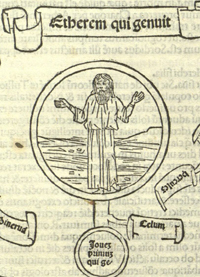 Highlights of our exhibition include a combined edition of De genealogia deorum gentilium and his other reference work, de montibus & siluis de fontibus: lacubus: & fluminibus, published in 1494 in Venice. The Italian translation, Geneologia degli dei, published in 1547, also in Venice, will also be displayed. Other items of interest include sixteenth-century works of Ovid, Petrarch, Dante, and Villani. These include a first edition of the Italian translation of Dante’s De Volgare Eloquenzia.and an edition of Petrarch published by the famous printer, Aldus Manutius, in 1533. We will also display of early twentieth-century deluxe editions of Boccaccio’s Decameron, rated PG-13 for the portrayal of clerics in compromising poses.
Highlights of our exhibition include a combined edition of De genealogia deorum gentilium and his other reference work, de montibus & siluis de fontibus: lacubus: & fluminibus, published in 1494 in Venice. The Italian translation, Geneologia degli dei, published in 1547, also in Venice, will also be displayed. Other items of interest include sixteenth-century works of Ovid, Petrarch, Dante, and Villani. These include a first edition of the Italian translation of Dante’s De Volgare Eloquenzia.and an edition of Petrarch published by the famous printer, Aldus Manutius, in 1533. We will also display of early twentieth-century deluxe editions of Boccaccio’s Decameron, rated PG-13 for the portrayal of clerics in compromising poses.
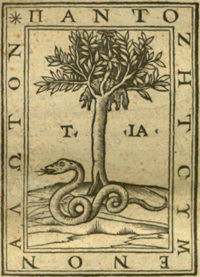
Branca, Vittore. Boccaccio: The Man and His Works, trans. Richard Monges. New York: New York UP, 1976.
Serafini-Sauli, Judith Powers. Giovanni Boccaccio. Boston: Twayne Publishers, 1982.
